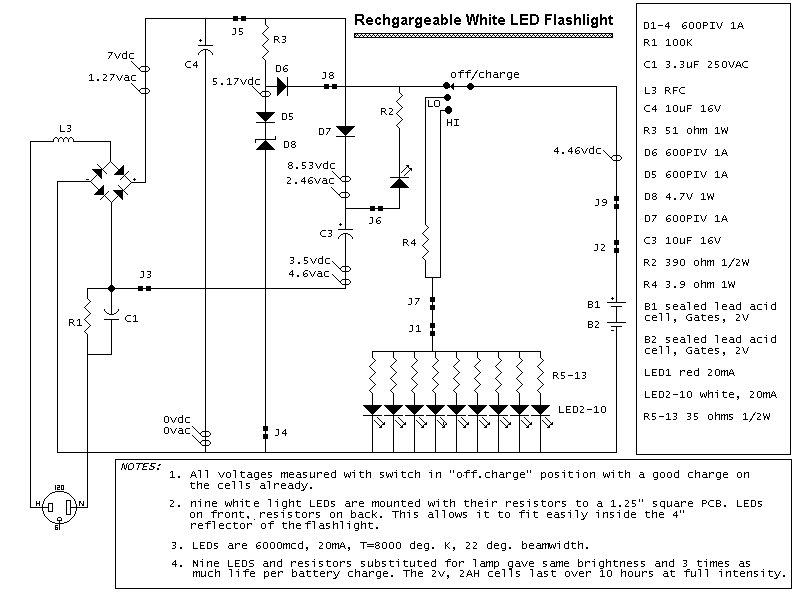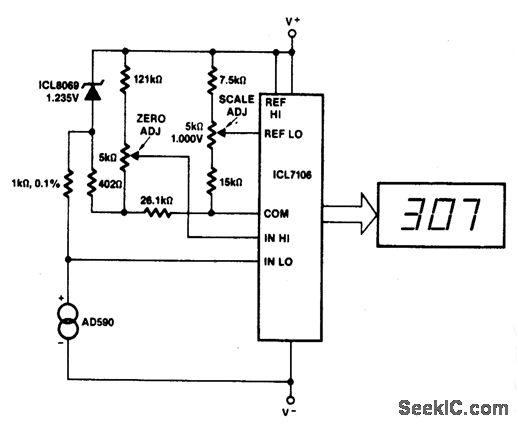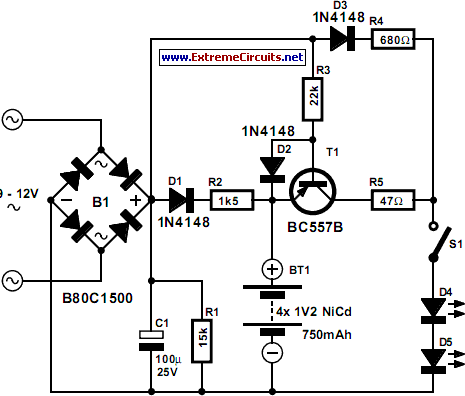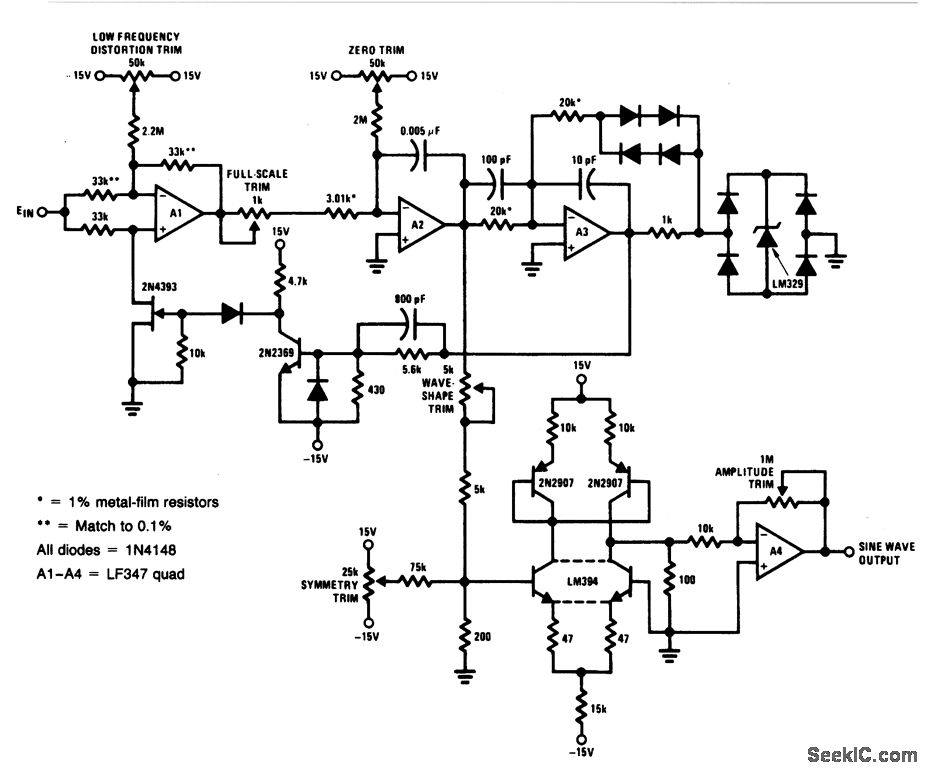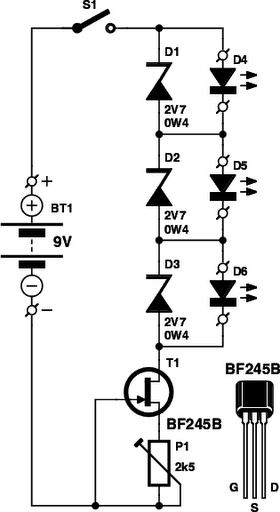
10 LED VU meter LM3915
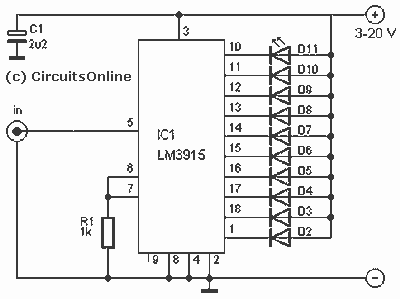
This simple LED VU meter has only a few parts but is useful as an indicator for the noise. The circuit is built around an LM3915, the brother of the logarithmic LM3914. The input signal from the VU meter is put on pin 5 of IC1. Through pin 9 of IC1 is the display mode sets (beam or point instructions). In the drawn state IC1 works in the dot mode (point). When pin 9 is coupled to pin 3, the IC works in bar mode (beam). Obviously, the whole circuit consumes less power in dot mode. More: Parts List R1 = 1 kOhm C1 = 2.2 uF D2-D11 = LED IC1 = LM3915 or LM3916
The LED VU meter circuit utilizes the LM3915 or LM3916 integrated circuit, which is designed for driving LED displays in either bar graph or dot mode. The primary function of this circuit is to visually represent audio signal levels, making it an effective tool for monitoring sound levels in various applications.
The circuit configuration includes a resistor (R1) of 1 kOhm, which is typically used for current limiting to protect the LEDs from excessive current. A capacitor (C1) with a value of 2.2 µF is included in the circuit to filter the input signal and stabilize the voltage levels, ensuring accurate representation of the audio signal.
The input audio signal is fed into pin 5 of the LM3915/LM3916 IC (referred to as IC1), where it is processed to drive the LEDs (D2 to D11). The LEDs are arranged in a sequential manner to indicate different levels of the audio signal. The design allows for up to 10 LEDs to be driven, providing a clear visual representation of the signal strength.
The display mode of the circuit can be adjusted using pin 9 of IC1. In the default configuration, the circuit operates in dot mode, illuminating one LED at a time corresponding to the input signal level. This mode is advantageous for low power consumption. By connecting pin 9 to pin 3, the circuit switches to bar mode, where multiple LEDs can be illuminated simultaneously to provide a more comprehensive visual indication of the audio level.
The simplicity of the circuit, combined with its effectiveness in visualizing audio signals, makes it suitable for various applications, including audio equipment, mixers, and sound level monitoring systems. The use of the LM3915/LM3916 IC ensures reliable performance and ease of integration into existing systems.This simple LED VU meter has only a few parts but is useful as an indicator for the noise. The circuit is built around an LM3915, the brother of the logarithmic LM3914. The input signal from the VU meter is put on pin 5 of IC1. Through pin 9 of IC1 is the display mode sets (beam or point instructions). In the drawn state IC1 works in the dot mode (point). When pin 9 is coupled to pin 3, the IC works in bar mode (beam). Obviously the whole circuit consumes less power in dot mode. Parts List R1 = 1 kOhm C1 = 2.2 uF D2-D11 = LED IC1 = LM3915 or LM3916 🔗 External reference
The LED VU meter circuit utilizes the LM3915 or LM3916 integrated circuit, which is designed for driving LED displays in either bar graph or dot mode. The primary function of this circuit is to visually represent audio signal levels, making it an effective tool for monitoring sound levels in various applications.
The circuit configuration includes a resistor (R1) of 1 kOhm, which is typically used for current limiting to protect the LEDs from excessive current. A capacitor (C1) with a value of 2.2 µF is included in the circuit to filter the input signal and stabilize the voltage levels, ensuring accurate representation of the audio signal.
The input audio signal is fed into pin 5 of the LM3915/LM3916 IC (referred to as IC1), where it is processed to drive the LEDs (D2 to D11). The LEDs are arranged in a sequential manner to indicate different levels of the audio signal. The design allows for up to 10 LEDs to be driven, providing a clear visual representation of the signal strength.
The display mode of the circuit can be adjusted using pin 9 of IC1. In the default configuration, the circuit operates in dot mode, illuminating one LED at a time corresponding to the input signal level. This mode is advantageous for low power consumption. By connecting pin 9 to pin 3, the circuit switches to bar mode, where multiple LEDs can be illuminated simultaneously to provide a more comprehensive visual indication of the audio level.
The simplicity of the circuit, combined with its effectiveness in visualizing audio signals, makes it suitable for various applications, including audio equipment, mixers, and sound level monitoring systems. The use of the LM3915/LM3916 IC ensures reliable performance and ease of integration into existing systems.This simple LED VU meter has only a few parts but is useful as an indicator for the noise. The circuit is built around an LM3915, the brother of the logarithmic LM3914. The input signal from the VU meter is put on pin 5 of IC1. Through pin 9 of IC1 is the display mode sets (beam or point instructions). In the drawn state IC1 works in the dot mode (point). When pin 9 is coupled to pin 3, the IC works in bar mode (beam). Obviously the whole circuit consumes less power in dot mode. Parts List R1 = 1 kOhm C1 = 2.2 uF D2-D11 = LED IC1 = LM3915 or LM3916 🔗 External reference
